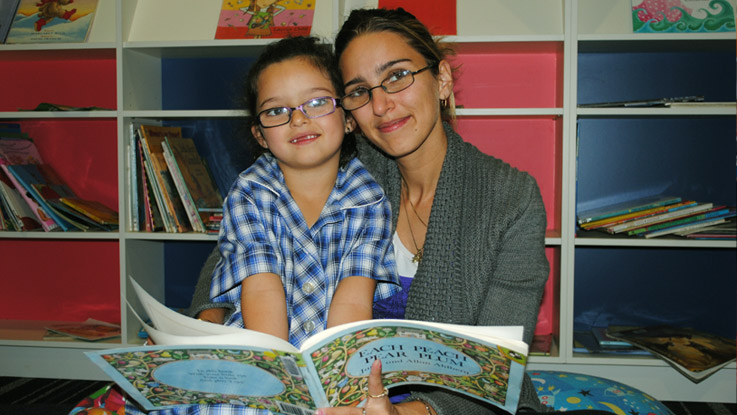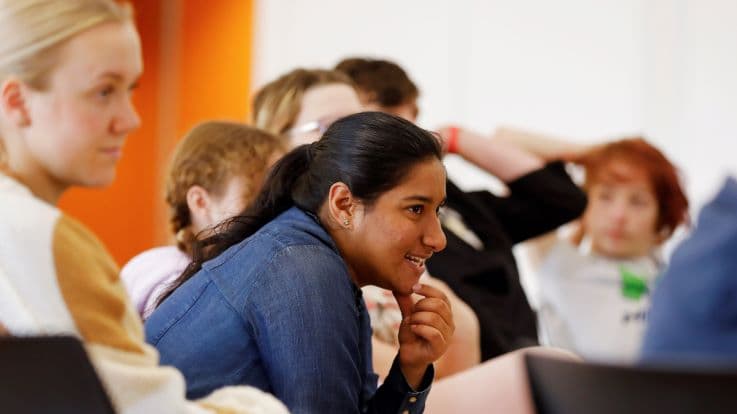
In wealthy Australia, child poverty holds back success at school
Doug Taylor
Chief Executive Officer at The Smith Family
As we dissect the measures announced in the Federal budget, it’s a crucial time to reflect on the state of child poverty and its impact on educational outcomes in this country.
Australia is one of the wealthiest countries in the world, so it seems unthinkable that children's education is adversely affected by poverty. Yet, this is the harsh reality facing many young Australians today.
A national Community Attitudes Survey The Smith Family conducted in May, revealed that most Australians now view the cost-of-living crisis as a more significant factor contributing to child poverty than the COVID-19 pandemic, with negative flow-on effects for children's education.
And we know through our work on the ground nationwide, that financial pressures are making it increasingly difficult for children experiencing poverty to keep up at school. This crisis is hindering their academic performance, school attendance, and overall school experience.
Recently I met Pete, a factory-worker dad of four who had taken on extra shifts because with price rises, his income barely stretches to cover their essentials. Gel, his wife, is also working evenings, stacking supermarket shelves to bring in extra money.
Their children had access to an old tablet they used for their online homework, but that stopped working recently and they can’t afford to replace it, let alone pay for internet access.
Families are trying really hard, as are schools and teachers to help children and young people facing these circumstances to fit in and do well at school – but the daily reality of life’s struggles can be unrelenting.
It simply doesn't add up that Australian children are missing out on the chance to succeed at school because of family poverty.
So, we welcome budget measures that take some of the pressure off families. These include increased income support for those receiving JobSeeker, Austudy and Youth Allowance, plus the extension of the Parenting Payment to ease some of the financial pressures for single carer families.
We also welcome the $32 million for school infrastructure upgrades, noting that a portion of those funds are set aside for new tablets and laptops – the pen and paper for 21st century students. Without these essential resources for a modern education, students are at risk of falling further behind at school.
And the increased funding announced for thousands more university places, and fee-free TAFE and vocational courses, will give students who once may have thought that higher education was out of reach, the chance to achieve their learning and career goals.
These measures will alleviate some of the immediate pressures faced by young Australians experiencing poverty, but we also need to think about policy that will address the longer- term impacts of educational disadvantage. A Grattan Institute analysis of the latest NAPLAN data shows that the learning gap between the most advantaged and least advantaged students more than doubles between Year 3 and Year 9. By that time that gap is the equivalent of 4-5 years of learning.
Currently, there are two major reviews in place that could see transformational, long-term change for the young people we support.
The first is the Australian Universities Accord, which will deliver recommendations and performance targets for the tertiary education sector by the end of the year. Importantly, two of the focus areas of the review are accessibility and affordability, which are essential in terms of our work.
The second is the National School Reform Agreement, established by Federal Minister for Education Jason Clare, to advise Education Ministers on the key targets and reforms. The Panel is chaired by The Smith Family’s former CEO, Dr Lisa O’Brien, and has a strong focus on student equity and driving measurable improvements for students most at risk of falling behind and who need additional support.
The foci of these education reviews are terrific, and we are proud to be advocating for our students and families on policy changes that will ensure that every child has access to a quality, equitable education.
We all want to live in a country where everyone can reach their full potential. That should be our starting point. And helping more children to overcome educational inequality caused by poverty, means they can become the best they can be.
My mind turns again to Pete and Gel. As with all families, their children will truly benefit when we give them the opportunities and resources they need so they can participate at school and do their best, just like their classmates can.
Education is one of the most powerful change agents. It’s why we continue our work mitigating the impacts of child poverty through our support of a child’s learning. Because with a strong education as their foundation, these young Australians can take the lead in changing their futures for the better. And that’s got to be good for us all.



